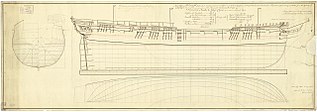See also
- Niad (disambiguation)
- Nyad (disambiguation)
- NAIA (disambiguation)
- National Institute of Allergy and Infectious Diseases (NIAID), American federal research institute
The Naiads are water-centered nymphs in Greek mythology.
Naiad may also refer to:
Cricket is a bat-and-ball sport contested by two teams.

Naiad, named after the naiads of Greek legend, is the innermost satellite of Neptune and the nearest to the center of any gas giant with moons with a distance of 48,224 km from the planet's center. Its orbital period is less than a Neptunian day, resulting in tidal dissipation that will cause its orbit to decay. Eventually it will either crash into Neptune's atmosphere or break up to become a new ring.
Rostrum may refer to:

A dragonfly is a flying insect belonging to the infraorder Anisoptera below the order Odonata. About 3,000 extant species of true dragonflies are known. Most are tropical, with fewer species in temperate regions. Loss of wetland habitat threatens dragonfly populations around the world. Adult dragonflies are characterized by a pair of large, multifaceted, compound eyes, two pairs of strong, transparent wings, sometimes with coloured patches, and an elongated body. Many dragonflies have brilliant iridescent or metallic colours produced by structural coloration, making them conspicuous in flight. An adult dragonfly's compound eyes have nearly 24,000 ommatidia each.

In biology, a nymph is the immature form of some invertebrates, particularly insects, which undergoes gradual metamorphosis (hemimetabolism) before reaching its adult stage. Unlike a typical larva, a nymph's overall form already resembles that of the adult, except for a lack of wings. In addition, while a nymph moults, it never enters a pupal stage. Instead, the final moult results in an adult insect. Nymphs undergo multiple stages of development called instars.
Naia or NAIA may refer to:
Several ships of the Royal Navy have been named HMS Naiad after a Greek mythological figure, the Naiad

HMS Naiad (F39) was a Leander-class frigate of the Royal Navy (RN). Like the rest of the class, Naiad was named after a figure or figure of mythology, in this case, the Naiads of Greek mythology. Naiad was built by Yarrow Shipbuilders of Scotstoun. She was launched on 4 November 1963 and commissioned on 15 March 1965.
Enchantress most commonly refers to:
DIA or Dia may refer to:
Main may refer to:
In Greek mythology, a nymph or nymphe is a female nature-spirit.
Nixe may refer to:
Prometheus is a figure in Greek mythology.

HMS Naiad was a Royal Navy fifth-rate frigate that served in the Napoleonic Wars. She was built by Hall and Co. at Limehouse on the Thames, launched in 1797, and commissioned in 1798. She served in the French Revolutionary and Napoleonic Wars, and her last actions occurred in 1824–5. She was paid off in 1826. She then served for many years in Latin America as a coal depot, first for the Royal Navy and then for the Pacific Steam Navigation Company. She was broken up in 1898, 101 years after her launching.

HMS Naiad was a Dido-class light cruiser of the Royal Navy which served in the Second World War. She was sunk in action on 11 March 1942 south of Crete in the Mediterranean Sea.
Daphne was a naiad in Greek mythology.

Megaloprepus caerulatus, also known as the blue-winged helicopter, is a forest giant damselfly of the family Coenagrionidae. Forest giant damselflies were previously recognized as their own family, Pseudostigmatidae. M. caerulatus is found in wet and moist forests in Central and South America. It has the greatest wingspan of any living damselfly or dragonfly, up to 19 centimeters (7.5 inches) in the largest males. Its large size and the markings on its wings make it a conspicuous species; a hovering Megaloprepus has been described as a "pulsating blue-and-white beacon".
Argyra may refer to:
Several ships of the Swedish Navy have been named HSwMS Najad, named after the mythological water spirit: